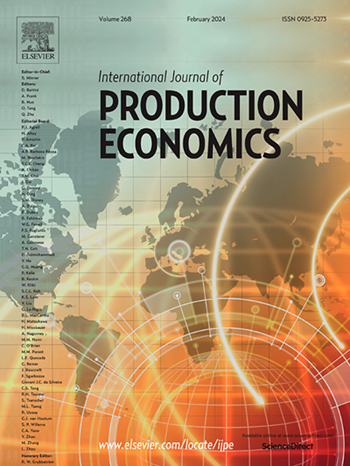Digital transformation in the blockchain era: Balancing efficiency and resilience in operations management
IF 9.8
1区 工程技术
Q1 ENGINEERING, INDUSTRIAL
引用次数: 0
Abstract
Nowadays, blockchain and other disruptive digital technologies have driven corporate digital transformation (DT) and empowered traditional business processes for achieving high-quality development. DT is considered an effective way for gaining a competitive advantage by incentivizing innovation. However, theoretical and empirical mechanisms behind the effect of DT on corporate innovation remain unclear from the perspective of operations and supply chain management (OSCM). To fill this gap, we use panel data of China’s A-share listed companies from 2010 to 2020 and employ a two-way fixed effect model to uncover the relationship between DT and corporate innovation. Our findings suggest that DT can significantly improve innovation outcomes. Sub-technology regression analysis reveals that artificial intelligence (AI), big data, cloud computing, and digital applications positively affect corporate innovation in terms of quantity and quality. Surprisingly, joint effect analysis shows that the interaction term coefficient between blockchain and AI is significantly negative, indicating a competitive relationship between these two technologies. Moreover, firms with higher information transparency and lower market competition are more adaptable during DT and thus generate higher innovation returns compared with their counterparts. Mechanism tests indicate that digitalization can stimulate innovation through balancing efficiency and resilience. Specifically, DT reduces resource misallocation and waste, which in turn enhances the resource allocation efficiency of firms. Information sharing supported by digital platforms improves firms’ visibility and velocity to market environments, ensures the continuity and stability of business operations, and ultimately improves organizational resilience. These findings shed light on the substantial potential of the effect of blockchain and other disruptive digital technologies from the perspective of OSCM and provide insights for promoting the digitalization of enterprises.
b区块链时代的数字化转型:平衡运营管理的效率和弹性
如今,区块链等颠覆性数字技术推动了企业数字化转型,为传统业务流程实现高质量发展赋能。创新被认为是通过激励创新获得竞争优势的有效途径。然而,从运营和供应链管理(OSCM)的角度来看,DT对企业创新影响的理论和实证机制尚不清楚。为了填补这一空白,我们利用2010 - 2020年中国a股上市公司的面板数据,采用双向固定效应模型来揭示DT与企业创新之间的关系。研究结果表明,创新创新能够显著改善创新成果。子技术回归分析表明,人工智能、大数据、云计算和数字应用对企业创新的数量和质量都有积极的影响。令人惊讶的是,联合效应分析表明,区块链和AI之间的交互项系数显著为负,表明这两种技术之间存在竞争关系。此外,信息透明度越高、市场竞争程度越低的企业在创新创新过程中适应性越强,从而产生的创新回报也就越高。机制测试表明,数字化可以通过平衡效率和弹性来刺激创新。具体来说,DT减少了资源错配和浪费,从而提高了企业的资源配置效率。数字平台支持的信息共享提高了企业对市场环境的可视性和速度,确保了业务运营的连续性和稳定性,最终提高了组织的弹性。这些发现从OSCM的角度揭示了区块链和其他颠覆性数字技术的巨大潜力,并为促进企业数字化提供了见解。
本文章由计算机程序翻译,如有差异,请以英文原文为准。
求助全文
约1分钟内获得全文
求助全文
来源期刊
CiteScore
21.40
自引率
7.50%
发文量
266
审稿时长
52 days
期刊介绍:
The International Journal of Production Economics focuses on the interface between engineering and management. It covers all aspects of manufacturing and process industries, as well as production in general. The journal is interdisciplinary, considering activities throughout the product life cycle and material flow cycle. It aims to disseminate knowledge for improving industrial practice and strengthening the theoretical base for decision making. The journal serves as a forum for exchanging ideas and presenting new developments in theory and application, combining academic standards with practical value for industrial applications.

 求助内容:
求助内容: 应助结果提醒方式:
应助结果提醒方式:


